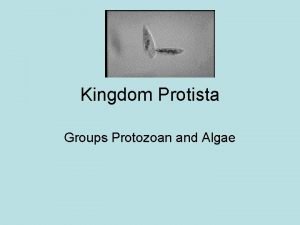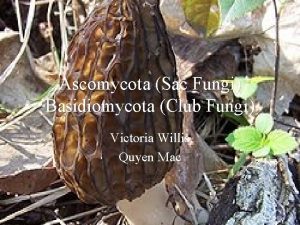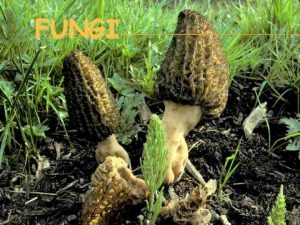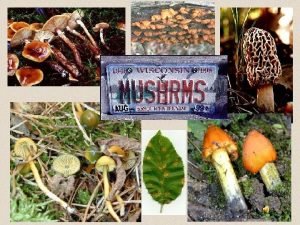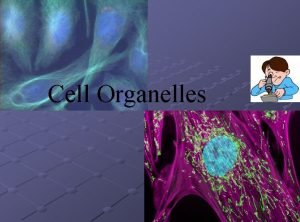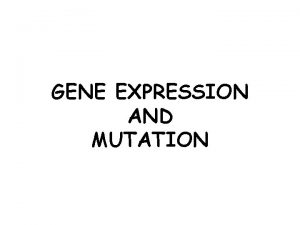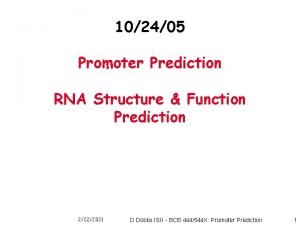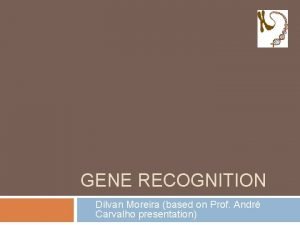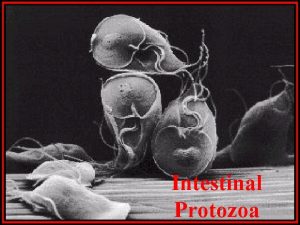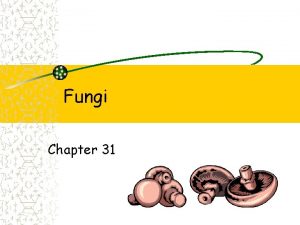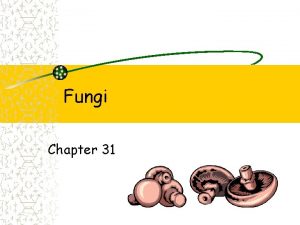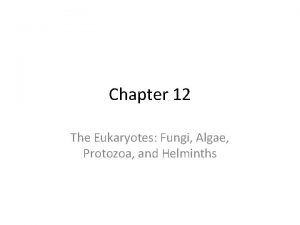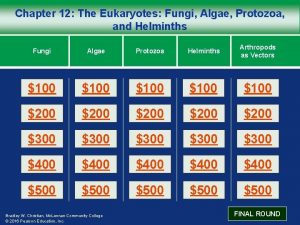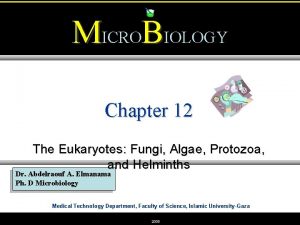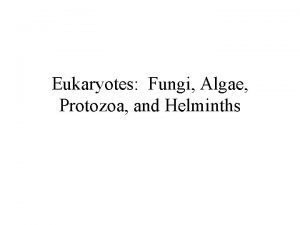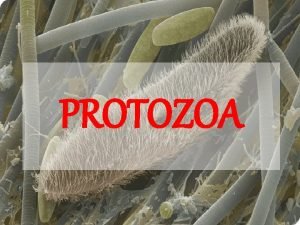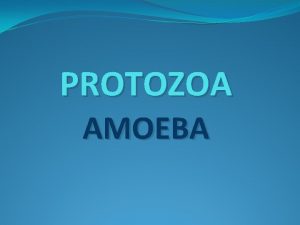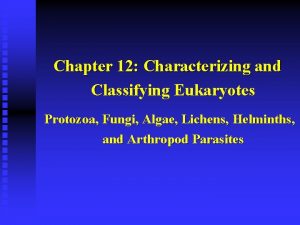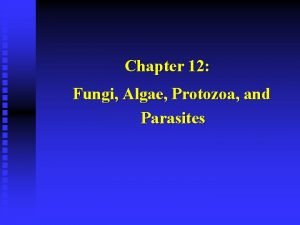Chapter 12 The Eukaryotes Fungi Algae Protozoa and
















- Slides: 16

Chapter 12 The Eukaryotes: Fungi, Algae, Protozoa, and Helminths Copyright © 2010 Pearson Education, Inc. Lectures prepared by Christine L.

Lichens § Mutualistic combination of an alga (or cyanobacterium) and fungus § Alga produces and secretes carbohydrates; fungus provides holdfast Copyright © 2010 Pearson Education, Inc.

Three Types of Lichens Copyright © 2010 Pearson Education, Inc. Figure 12. 9 a

Lichen Thallus Copyright © 2010 Pearson Education, Inc. Figure 12. 9 b

Economic Effects of Lichens § Dyes § Antimicrobial (Usnea) Copyright © 2010 Pearson Education, Inc.

Algae Kingdom Protist Nutritional Type Photoautotroph Multicellularity Some Cellular Arrangement Unicellular, colonial, filamentous, tissues Food Acquisition Method Diffusion Characteristic Features Pigments Embryo Formation None Copyright © 2010 Pearson Education, Inc.

Algal Habitats Copyright © 2010 Pearson Education, Inc. Figure 12. 10 a

Brown Alga Copyright © 2010 Pearson Education, Inc. Figure 12. 11 b

Phaeophyta § Brown algae (kelp) § Cellulose and alginic acid cell walls § Multicellular § Chlorophyll a and c, xanthophylls § Store carbohydrates § Harvested for algin Copyright © 2010 Pearson Education, Inc. Figure 12. 10 b

Rhodophyta § § Red algae Cellulose cell walls Most are multicellular Chlorophyll a and d, phycobiliproteins § Store glucose polymer § Harvested for agar and carrageenan Copyright © 2010 Pearson Education, Inc. Figure 12. 10 c

Chlorophyta § Green algae § Cellulose cell walls § Unicellular or multicellular § Chlorophyll a and b § Store glucose polymer § Gave rise to plants Copyright © 2010 Pearson Education, Inc. Figure 12. 11 a

Diatoms § § § Pectin and silica cell walls Unicellular Chlorophyll a and c, carotene, xanthophylls Store oil Fossilized diatoms formed oil Produce domoic acid Copyright © 2010 Pearson Education, Inc.

Dinoflagellates § Cellulose in plasma membrane § Unicellular § Chlorophyll a and c, carotene, xanthins § Store starch § Some are symbionts in marine animals § Neurotoxins cause paralytic shellfish poisoning Copyright © 2010 Pearson Education, Inc. Figure 12. 13

Oomycota § § § Water molds Cellulose cell walls Multicellular Chemoheterotrophic Produce zoospores Copyright © 2010 Pearson Education, Inc. Figure 12. 14

Oomycota § Decomposers and plant parasites § Phytophthora infestans responsible for Irish potato blight § P. cinnamoni infects Eucalyptus § P. ramorum causes sudden oak death Copyright © 2010 Pearson Education, Inc. Figure 12. 14

Q&A § During the Great Irish Famine of the mid -nineteenth century, well over 1 million people died or were displaced because of the devastating effects of Phytophthora infestans, an alga that infects potato crops. What damage is Phytophthora causing in other parts of the world today? Copyright © 2010 Pearson Education, Inc.
 Protista protozoa and algae
Protista protozoa and algae Commensal organism
Commensal organism Basidiomycota club fungi
Basidiomycota club fungi General characteristics of fungi
General characteristics of fungi Deuteromycota
Deuteromycota Is animal cell prokaryotic or eukaryotic
Is animal cell prokaryotic or eukaryotic Diff between prokaryotes and eukaryotes
Diff between prokaryotes and eukaryotes Cytoskeleton nickname
Cytoskeleton nickname Prokaryotes and eukaryotes
Prokaryotes and eukaryotes Multiple choice questions on prokaryotes and eukaryotes
Multiple choice questions on prokaryotes and eukaryotes Gene prediction in prokaryotes and eukaryotes
Gene prediction in prokaryotes and eukaryotes Lac operon inducible or repressible
Lac operon inducible or repressible Genetic linkage and mapping in eukaryotes
Genetic linkage and mapping in eukaryotes Polimerase
Polimerase Prokaryotic cell wall
Prokaryotic cell wall Functional anatomy of prokaryotic and eukaryotic cells
Functional anatomy of prokaryotic and eukaryotic cells Protozoa vs helminth
Protozoa vs helminth
